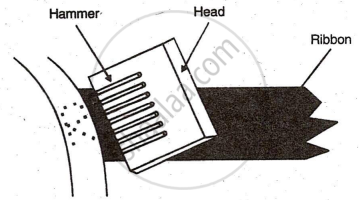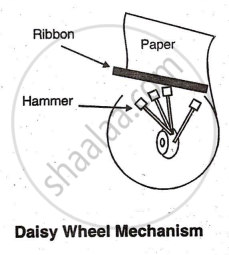Topics
Electronic Components/ Study of Components and Circuits
- Introduction to Electronic Components
- Classification Of Components
- Resistors
- Types of Resistors
- Capacitors
- Types of Capacitors
- Inductors
- Basics of Transformers
- Basics of Semiconductor Devices
- PN Junction Diode
- Half Wave Rectifier
- Types of diodes
- Transistors
- Transistor Amplifier
- Basic of Transistor as a Switch
- Switch Mode power Supply (SMPS)
- Classification of IC’S
Logic Gates and Sequential Circuit
- Introduction of Logic gates and sequential circuits
- Basics of Logic Gates
- Types of gates
- Odd/Even Parity
- DE-MORGAN'S Theorem
- NAND Gate is an Universal Building Block
- HALF ADDER AND FULL ADDER
- Multiplexers
- Demultiplexer
- Encoder
- Decoder
- FLIP-FLOPS
- Counters
- Shift Registers
Functional Hardware of Pc
Peripheral Devices
- Introduction to output devices
- Video
- Printers
Output Devices
Video(Monitor)
The video display is the primary output device on a computer. The video board's main function is to take information from the CPU and display it on the monitor. Composite monitors offer higher resolution than TVs and are inexpensive, while RGB monitors provide better resolution for color text. EGA monitors are higher-resolution RGB monitors. TIL monitors are monochromatic with high-resolution steady images.
Video board characteristics include:
Resolution: Number of horizontal and vertical dots (e.g., 640 x 480 means 640 dots wide and 480 dots high). Higher resolution means more dots on the screen, requiring more memory but offering better clarity.
Video Monitor Characteristics
- Dot pitch: More resolution means more dots on the screen. Dot pitch is the distance between the centers of the dots on the monitor, measured in millimeters.
- Horizontal Scan Frequency: Monitors work by directing an electron beam at the screen, causing phosphors to glow and form images. Horizontal scan frequency is the number of times the beam sweeps horizontally per second, measured in Hz or kHz (e.g., 480 lines x 60 screens/second = 28,800 lines/second).
- Multi-sync: Multi-syncing is the ability of a monitor to handle multiple resolutions automatically.
Dot matrix printer (Impact Printer)
Dot matrix printers are known for their low cost, high speed, and Near Letter Quality (NLQ) print, typically ranging from 80 to 600 cps. The print head has a vertical array of pins that strike an inked ribbon to create dot patterns on paper. They print bi-directionally for maximum speed but have lower print quality compared to inkjet printers and are available in black and white.

Daisy wheel & Line printers (Impact Printer)
Daisy Wheel: It is named because its print head resembles a daisy flower, with printing arms like petals. It operates at speeds up to 90 cps. The hub rotates continuously at high speed, and a hammer strikes the appropriate character when in position, like a typewriter.

Line Printer: It prints whole line at a time, but line printers of dot matrix are slow. Generally, line printers use rapidly moving chains or bands of print characters or some form of print drums to print lines of information.
InkJet
An inkjet printer that produces characters by spraying small ink droplets onto paper. A piezoelectric crystal vibrates to throw ink droplets from a reservoir, which are then charged by electrodes and directed by deflecting plates to form characters. Inkjet printers can print in color and include software for adjusting settings like paper size and printing mode (Normal/Best/Draft).
Laser
A laser printer is a high-speed, high-quality printer using a laser xerographic mechanism. It creates an image on a photosensitive drum, attracts toner to the charged areas, and transfers the image to paper, which is then heated to set the print.
Advantages:
- It offers high quality printing in text and graphics.
- It offers wide selection of character fonts, printing quality mode tinder software control.
Disadvantages:
- Initial Cost and cartridge cost is High.
- Multiple carbon copying is not possible
